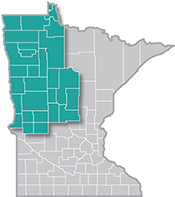 The presence of such industry powerhouses as Polaris, Arctic Cat and New Flyer make Northwest Minnesota a hub of transportation equipment manufacturing.
The presence of such industry powerhouses as Polaris, Arctic Cat and New Flyer make Northwest Minnesota a hub of transportation equipment manufacturing.
From wheat and potatoes to soybeans and sugar beets, the region is a major producer and processor of food staples and specialty agricultural products.
Want the freshest data delivered by email? Subscribe to our regional newsletters.
While unemployment remains historically low, other recent labor market information shows a job market less favorable to job seekers.
8/27/2025 11:40:37 AM
Anthony Schaffhauser
While unemployment remains historically low, other recent labor market information shows a job market less favorable to job seekers.
The Quarterly Census of Employment and Wages (QCEW) for first quarter 2025 shows a slight 0.2% employment decline (-440 jobs) for Northwest Minnesota compared to first quarter 2024 (Figure 1). Such a small over-the-year decline in just one quarter could be a meaningless anomaly. The first quarter has the lowest employment of the year due to winter conditions, making this time of the year more susceptible to short-term variation.
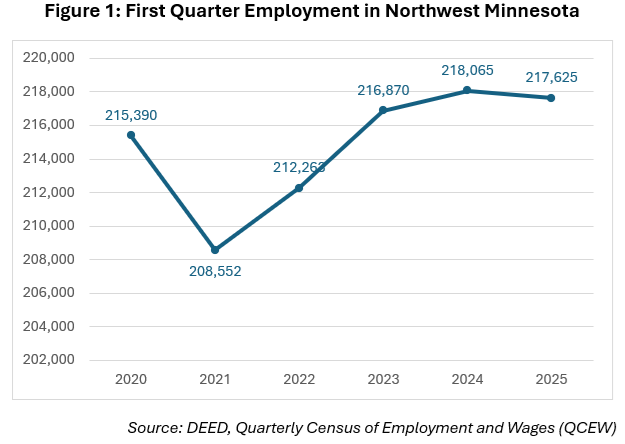
The job market has been consistently strong before the pandemic, in the recovery and through 2024. Looking back to 2015, the only other over-the-year employment declines in the Northwest were associated with the pandemic, and those were massively larger drops. This raises an important question: Is there corroborating evidence that the labor market is genuinely softening?
The answer appears to be yes. Softening job trends are not isolated to Northwest Minnesota (Figure 2). Three other Minnesota regions show slight declines, while the remaining three have stagnant or slowing employment growth. This pattern looks too pervasive to be an anomaly, yet if the labor market were significantly cooling, we would expect to see it reflected in unemployment rates.
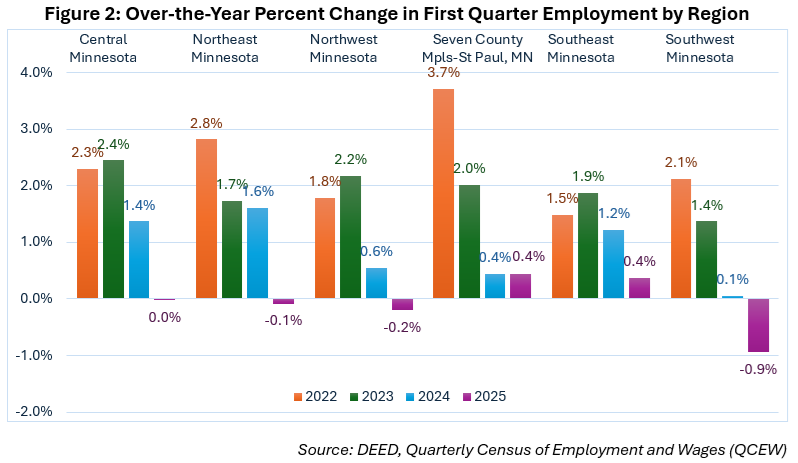
While the region's unemployment rate has been ticking up, it is from historically low levels. Even at 4.6% so far in 2025, that remains lower than in each of the five years prior to the pandemic, when it hovered between 4.7% and 5.5% (Figure 3).
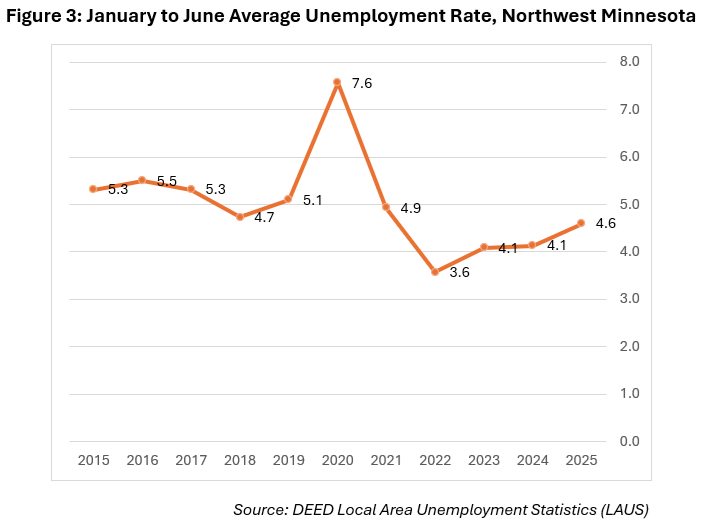
Even with a slight decline in jobs, the unemployment rate suggests the job market is returning to pre-pandemic normalcy rather than experiencing significant deterioration. However, the unemployment rate alone misses a crucial dynamic that a Federal Reserve Bank of Minneapolis analysis reveals: job seekers are having considerably more difficulty finding employment than they did in 2019.
This phenomenon—which the popular press has dubbed the "no hire, no fire" job market – reflects employers' reluctance to both lay off existing workers and hire new ones. While layoffs haven't increased substantially, the path from unemployment to employment has become notably more challenging.
The continuing unemployment claims data for Northwest Minnesota show this is also the case here (Figure 4). Unemployment Insurance (UI) continuing claims for the first seven months of the year are higher in 2025 than in 2017, 2018, and 2019. This indicates that Northwest Minnesota job seekers are experiencing longer periods of unemployment than in the three years prior to the pandemic – a clear sign that finding work has become more difficult, even in a relatively stable employment environment.
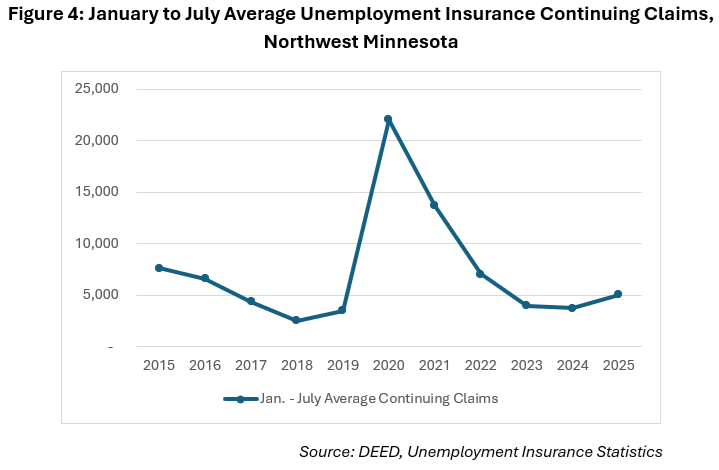
Thus, recent data on jobs and UI continuing claims suggest the Northwest labor market has recently softened more than before the pandemic, reflecting a broader national trend. While unemployment remains historically low, the underlying dynamics have shifted significantly. Job seekers face a more challenging environment with longer search periods and fewer opportunities, even as employers maintain their existing workforce. For workforce development and economic development professionals, this "no hire, no fire" reality demands strategies that address both the extended job search process and the evolving needs of employers who have become more selective in their hiring practices.
For more information about unemployment in Northwest Minnesota, contact Anthony Schaffhauser at Anthony.Schaffhauser@state.mn.us.